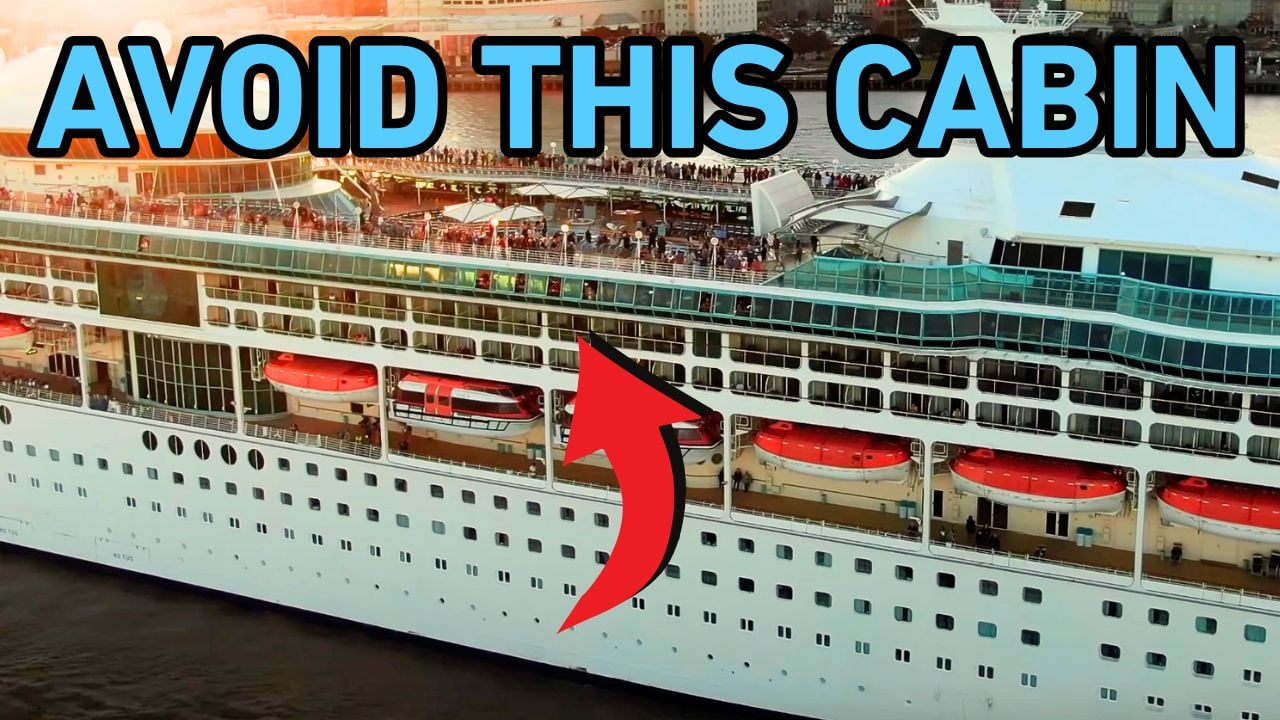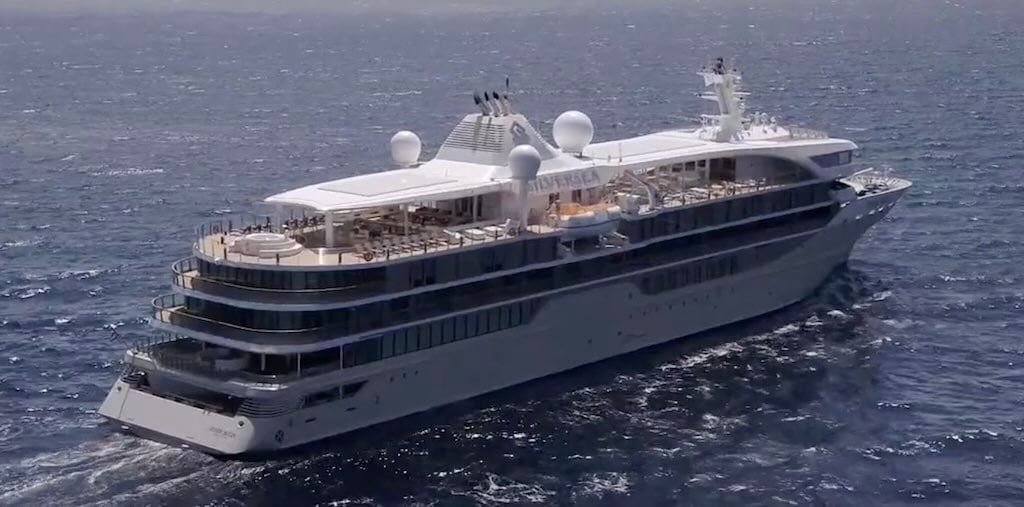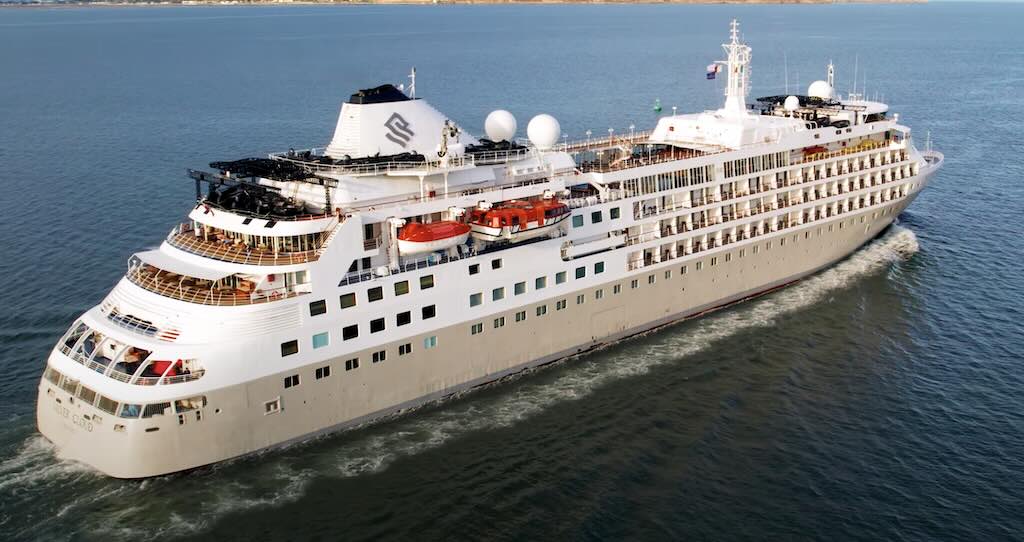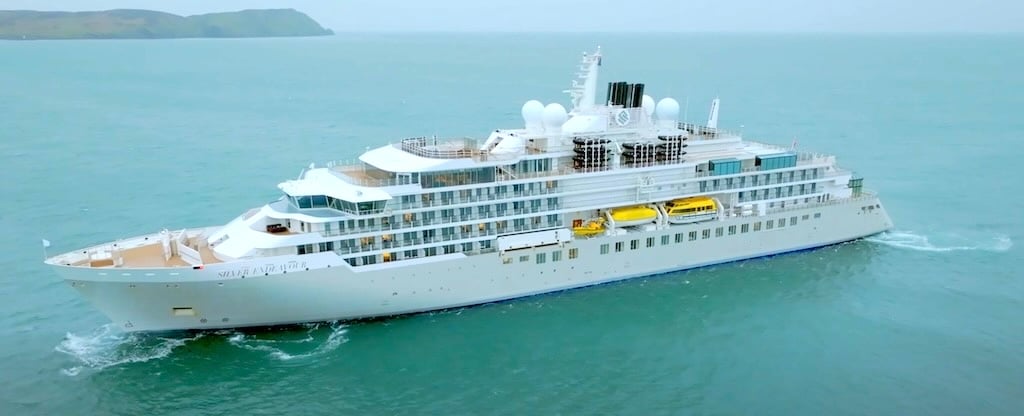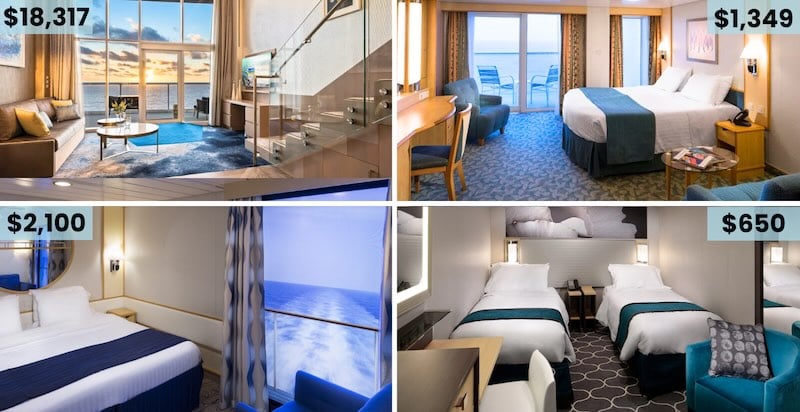When it comes to legendary ship matchups, few are as intriguing as Harmony of the Seas vs Titanic. More than a century apart, both vessels were celebrated as the largest ships in the world when they debuted. While Titanic embodied early 20th-century elegance, Harmony of the Seas redefined cruising in the modern era with unmatched scale, technology, and amenities.

This isn’t just a size battle — it’s a huge comparison that shows how far ocean travel has advanced. In this guide, we’ll explore cost, size, passenger capacity, accommodations, amenities, ticket prices, and safety features. By the end, you’ll see how each ship made history — and why today’s cruise ships offer experiences Titanic could only dream of.
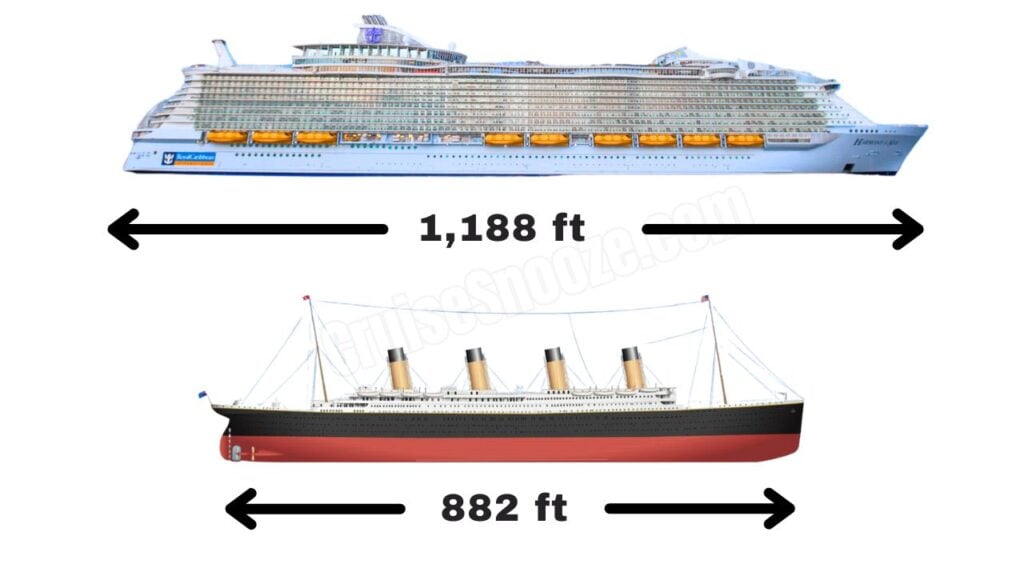
Table of Contents
Harmony of the Seas vs Titanic – Quick Overview
At first glance, Harmony of the Seas vs Titanic might feel like comparing ships from different worlds — and in many ways, it is. But both vessels earned worldwide recognition as the largest ship afloat when they first set sail.
- Titanic (1912): An ocean liner stretching 822 feet with a gross tonnage of 46,328 GT, designed for prestige and luxury on the North Atlantic route.
- Harmony of the Seas (2016): A modern Oasis-class cruise ship measuring 1,188 feet and 226,963 GT, built to entertain more than 6,600 guests at once.
While Titanic symbolized opulence for the elite of her time, Harmony of the Seas represents 21st-century innovation, complete with water parks, Broadway-style theaters, and technology that would have seemed unimaginable in 1912.
Cost to Build and Launch Dates
When comparing Harmony of the Seas vs Titanic, the price tag and launch history highlight just how far shipbuilding has evolved.
Titanic (1912):
- Built at Harland & Wolff shipyard in Belfast for about $7.5 million at the time.
- That equals roughly $198 million today when adjusted for inflation.
- Construction spanned just over three years, with her tragic maiden voyage beginning on April 10, 1912. For a deeper historical overview, see Britannica’s entry on Titanic.
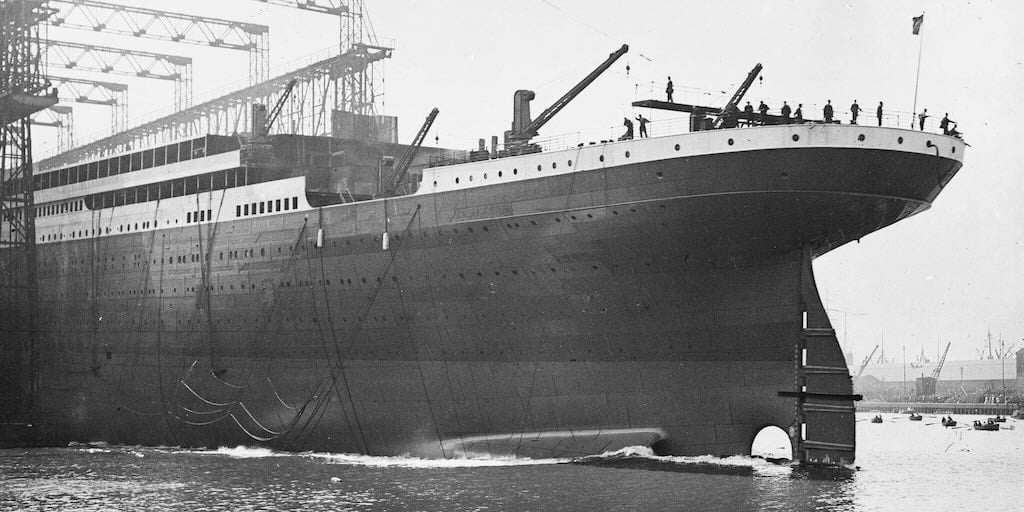
Harmony of the Seas (2016):
- Built at Chantiers de l’Atlantique shipyard in France for about $1.35 billion.
- Took just over three years to complete, despite being far larger and more complex than Titanic.
- Launched on May 15, 2016, with her inaugural cruise departing from Southampton, England.
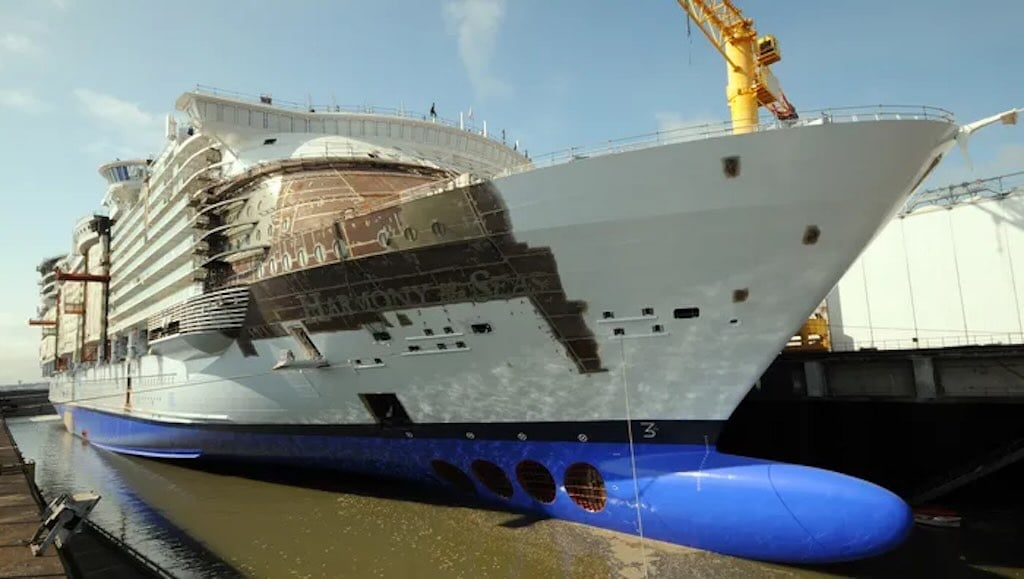
The most striking detail? Even though Harmony of the Seas is five times Titanic’s tonnage, the construction time was nearly the same. What once took thousands of men working with rivets and steel is now achieved with modern shipyard technology and precision engineering.
Size Comparison
When it comes to Harmony of the Seas vs Titanic, the numbers tell a jaw-dropping story. Titanic was considered enormous in 1912, but today Harmony towers over her in almost every dimension.
Titanic (1912):
- Length: 822 feet
- Width (Beam): 92.5 feet
- Height: 175 feet
- Gross Tonnage: 46,328 GT
Harmony of the Seas (2016):
- Length: 1,188 feet
- Width (Beam): 215.5 feet
- Height: 238 feet
- Gross Tonnage: 226,963 GT
To put this in perspective, Harmony of the Seas is nearly five times larger by volume than Titanic. The older ship would have looked massive in 1912, but today it could almost fit inside Harmony’s frame. This massive leap is a clear reminder of how engineering and naval design have advanced over the last century.
Passenger and Crew Capacities
Another huge difference in Harmony of the Seas vs Titanic is the number of people each ship could carry. Passenger expectations and crew requirements have changed dramatically over the past century.
Titanic (1912):
- Maximum Passengers: 2,435
- Crew Members: 892
- Passenger Cabins: 840
- Decks: 10
Harmony of the Seas (2016):
- Maximum Passengers: 6,687
- Crew Members: 2,300
- Passenger Cabins: 2,747
- Decks: 18 (16 accessible to guests)
Titanic was a behemoth of her time, designed to carry both the wealthy elite and immigrant families traveling to America. Harmony of the Seas, however, is designed as a floating resort, balancing massive passenger loads with entertainment, dining, and activities that require a much larger crew.
Passenger Accommodations
When comparing Harmony of the Seas vs Titanic, the style of accommodations shows just how much cruise travel has evolved.
Titanic (1912):
- First-class passengers enjoyed lavish suites with sitting rooms, ornate wood décor, and private bathrooms that rivaled the finest hotels.
- Second-class cabins were comfortable and stylish, with mahogany furniture and oak paneling.
- Third-class cabins, while more modest, were still superior to steerage rooms found on most ships of the era.
Harmony of the Seas (2016):
- Offers a huge range of accommodations, from budget-friendly interior staterooms to ocean-view and balcony cabins.
- The Royal Suite Class delivers luxury with priority services and exclusive lounges.
- At the very top is the Ultimate Family Suite, a two-story playground at sea with a slide, game room, and private Jacuzzi.
The accommodations on Titanic reflected the rigid class divisions of the early 1900s, while Harmony of the Seas is designed for variety and inclusivity. For a closer look at another Oasis-class ship’s cabins, check out our Symphony of the Seas vs Titanic comparison.
Onboard Amenities and Passenger Experience
When it comes to Harmony of the Seas vs Titanic, the onboard experience highlights the dramatic shift from early 20th-century luxury to today’s floating resort lifestyle.
Titanic (1912):
- A heated swimming pool and Turkish baths, considered cutting-edge for the time.
- A fully equipped gymnasium with rowers, exercise bikes, and even electric horses and camels.
- Elegant dining rooms, a Parisian-style café, and smoking lounges for first-class guests.
- Live orchestras that became a defining feature of the voyage.
Harmony of the Seas (2016):
- Multiple pools and whirlpools, plus a sprawling water park with thrilling slides.
- The FlowRider surf simulator, zip line, ice-skating rink, and rock-climbing walls.
- Over 20 restaurants and eateries, including sushi, steakhouse, and casual grab-and-go spots.
- Broadway-style shows, an aqua theater, karaoke, and nightlife venues for every taste.
Titanic’s amenities were luxurious marvels for 1912, but Harmony of the Seas offers an entertainment complex at sea that could rival major resorts on land. If you’re fascinated by Titanic’s original facilities, you can still connect with its history at the 10 best Titanic museums around the world.
Ticket Prices Then vs Now
One fascinating part of Harmony of the Seas vs Titanic is comparing what it cost to sail on each ship — and how those prices look when adjusted for today.
Titanic (1912):
- First-class suites ranged from £30 to £870 (about $4,350 to $126,000 in today’s money).
- Second-class cabins cost the modern equivalent of $1,750 to $4,350.
- Third-class tickets, often purchased by immigrant families, would equal $435 to $5,220 today.
Harmony of the Seas (2016):
- Interior staterooms can start as low as $1,500 per person.
- Balcony cabins usually run between $2,500 and $4,000, depending on itinerary.
- The Ultimate Family Suite can climb to $85,000 for a weeklong sailing.
The surprising truth? Cruising today is far more accessible. While Titanic was primarily for the wealthy and a small group of working-class travelers, Harmony of the Seas is designed so families, couples, and groups can all find a cabin that fits their budget. For more insight into Titanic’s final voyage and costs, see where she rests today in our guide on where the Titanic sank.
Safety Features
Perhaps the most defining difference in Harmony of the Seas vs Titanic lies in safety standards. The Titanic tragedy reshaped maritime laws forever, and today’s ships benefit from more than a century of progress.
Titanic (1912):
- Equipped with 20 lifeboats — enough for just over half the people onboard.
- Built with watertight compartments, but they weren’t sealed at the top.
- Relied on early 20th-century navigation technology, which left little margin for error.
- Despite being considered advanced at the time, the ship was not prepared for the iceberg collision that sealed its fate.
Harmony of the Seas (2016):
- Outfitted with modern radar, GPS, and electronic navigation.
- Carries enough lifeboats and life jackets for every passenger and crew member.
- Features redundant propulsion systems, fire suppression technology, and watertight doors.
- Meets strict international safety standards under SOLAS, including mandatory drills for passengers.
The Titanic disaster is a stark reminder of how vulnerable early ocean liners were. Some still wonder if the ship could ever be raised, but as we explain in our article on will the Titanic ever be brought to the surface, the answer is a definitive no.
Harmony of the Seas vs Titanic FAQs
Why is Harmony of the Seas considered better than Titanic?
Harmony of the Seas is vastly larger, safer, and more advanced. While Titanic was revolutionary in 1912, Harmony offers modern technology, endless amenities, and resort-style experiences that go far beyond what was possible a century ago.
Are modern cruise ships safer than Titanic?
Yes. After the Titanic disaster, international safety laws were rewritten. Ships like Harmony of the Seas feature advanced navigation, fire suppression, lifeboats for every passenger, and redundant power systems, making them far safer than ocean liners of the past.
How do ticket prices compare between Harmony of the Seas vs Titanic?
Titanic’s luxury suites cost more than $100,000 in today’s money, while Harmony offers staterooms starting around $1,500. Modern cruising is designed to be affordable for families and travelers of all budgets, not just the elite.
Did Titanic have similar amenities to modern ships?
Titanic had a swimming pool, Turkish baths, a squash court, and elegant dining rooms — impressive for 1912. But Harmony of the Seas offers water parks, Broadway shows, laser tag, surf simulators, and 20+ dining venues, creating a true floating resort.
Final Thoughts: Which Ship Stands Out Most?
Looking at Harmony of the Seas vs Titanic side by side, the differences are astonishing. Titanic was the ultimate ocean liner of her era, built to showcase elegance and power in the early 1900s. Harmony of the Seas, however, represents modern cruising at its peak, designed as a floating city with entertainment, dining, and technology beyond anything Titanic’s designers could have imagined.
Both ships captured the world’s imagination, both set records, and both defined what it meant to be the largest ship in the world. If you’re curious how another Oasis-class giant compares, don’t miss our guide on Star of the Seas vs Titanic.
Jim’s Take
As someone who’s been cruising since childhood, I can’t help but feel a mix of awe and respect when comparing Harmony of the Seas to Titanic. The contrast between 1912 luxury and today’s mega-ship innovation is staggering.
What fascinates me most is how Titanic symbolized the height of human achievement in her day, yet in just over 100 years, ships like Harmony have completely redefined what’s possible at sea. The fascination with Titanic will never fade, but stepping aboard Harmony of the Seas reminds me just how far cruising has come — and how much more there is still to explore.
